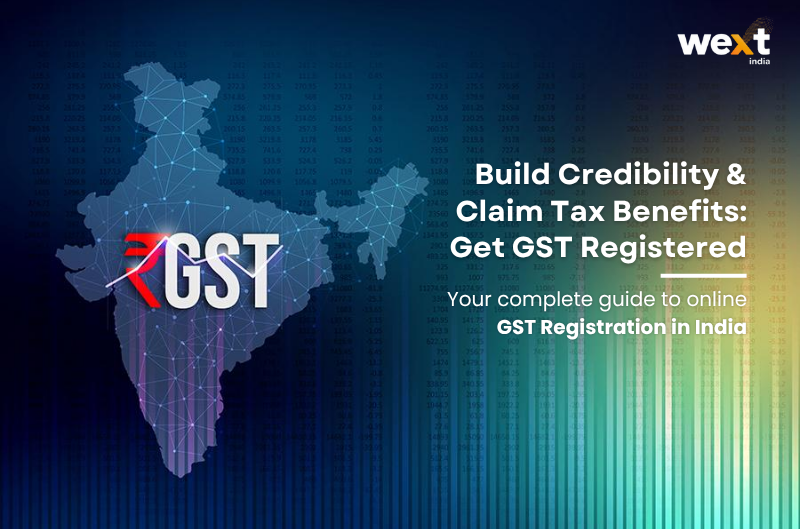Considering launching a startup in India? Don’t omit the GST Registration step — it’s not just a tax formality. The Goods and Services Tax (GST) is a single indirect tax applicable throughout the entire country and is one of the first and most important legal registrations that any entrepreneur should focus on obtaining.
Whether you are selling online, providing a service, or selling a product, a GST number is required. It helps improve your credibility, ensures compliance, and allows you to claim tax benefits. It is compulsory if your turnover is more than ₹20 lakh (₹10 lakh in special category states). Still, even if it is below that, voluntary registrations can lend a professional quality to your business.
Who Should Apply for GST and When?
If you’re trying to grow your startup and it’s flourishing, obtaining a new GST registration sooner rather than later helps you avoid penalties and allows you to reclaim the input tax credit from the very first day. If you are selling online (Amazon, Flipkart), interstate sales, or providing GST invoices to B2B clients, you need to register.
So don’t delay—register now at the official GST registration portal to ensure you remain compliant and save yourself from filing hassles later.
You may also like, What is GST
Documents Required for GST Registration
PAN Card: Business/owner identity
Aadhaar Card: OTP-based verification
Address Proof: A utility bill or a rental agreement
Bank Details: Canceled cheque or Bank account statement
Photograph: Photograph (passport size) of the Applicant
Step-by-Step Guide to Online GST Registration in India
Making your business GST-registered isn’t as intimidating as it sounds, especially when you follow these 7 clear steps through the official GST enrolment portal.
Step 1: Visit the GST Registration Portal.
Visit the official GST registration website. To start with, simply click “Services” → “Registration” → “New Registration“.
Step 2: Complete Part A of the GST Registration Form 1.
Enter key details such as:
- Legal name (as per PAN)
- PAN of your business
- Mobile number and email ID
OTP will be received at both email and phone.
Step 3: Avail Your Temporary Reference Number (TRN)
Upon verification, you will be provided with a Temporary Reference Number (TRN). This new GST registration number allows you to continue later.
Step 4: Log in Using the TRN and Complete Part B
Log in by using your TRN and the OTP provided to you. Complete Part B with the following details:
- Business and contact details
- Bank account information
- Authorized signatory
- Upload supporting documents
Pay attention to accuracy—any discrepancies can delay your online GST registration.
Step 5: Submit All Application Documents
Documents typically include:
- PAN card
- Aadhaar card
- Business address proof
- Bank details
- Passport-size photo
For companies or LLPs, attach incorporation papers or board resolutions.
Step 6: Verify and Submit the Application
You may also use a DSC (Digital Signature Certificate) if necessary (this is mostly applicable to LLPs and companies). Documentation that needs to be submitted. Upon verification, you can submit the GST registration form and obtain your Application Reference Number (ARN).
Step 7: Obtain Approval and Certificate for GST
A team of GST officers will process your application. As soon as the GSTIN (GST Identification Number) is approved, you will receive it. You can download your certificate from the GST registration portal, which will mark the completion of your GST registration.
Benefits of GST Registration for Startups
It adds a level of authenticity to your brand, opens the doors for interstate and B2B sales, and makes you eligible to collect tax from customers legally. It also enables you to claim input tax credits on your purchases. Most importantly, GST compliance puts your startup in a better position for scaling, finding funding, and establishing partnerships.
In this competitive startup landscape, even small compliance measures, such as GST, help to a great extent. For both investors and customers, regulatory clarity is a positive sign.
Conclusion: A must-do step for every Indian Startup:
In other words, GST enrolment is not a box-checking exercise, but a foundation upon which compliant and legitimate businesses can be built and expanded in India. From idea to existing, you’ll need to register a company name with the GST registration portal. Here’s what to do and when. Whether you’ve just thought of a business idea or already have a product ready to go to market, we’ve got you covered at every stage.
If you’re not sure where to turn, by all means, get an expert to help you. But don’t procrastinate—take online GST registration now and you will save yourself from pain and receive better opportunities for tomorrow.






[…] Aryan, News Editor […]
[…] You may also like, Step-by-Step Guide: GST Registration for Startups […]